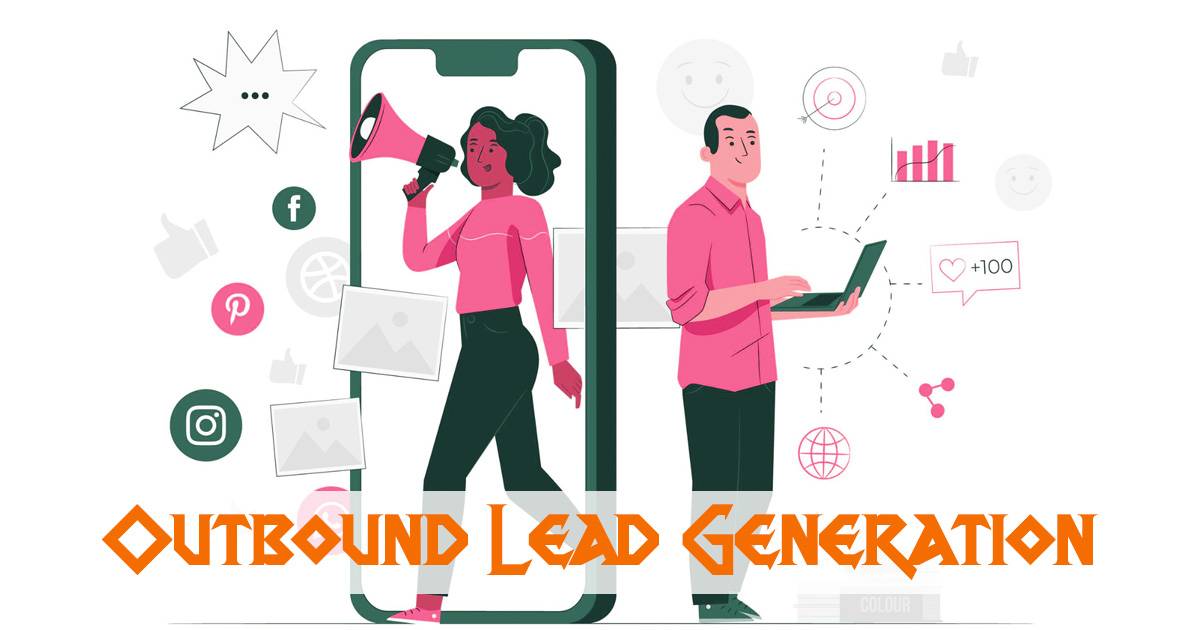Outbound Lead Generation: Proven Strategies for Finding & Engaging Prospects

Lead generation is one of the most important parts of marketing and gathering useful business data. It’s all about finding and connecting with potential customers who could be interested in your product or service. Businesses use several methods for this, including inbound lead generation—where you attract people with helpful content; referral-based lead generation—where happy customers recommend you to others; and outbound lead generation—where you actively reach out to potential customers.
According to research, 61% of marketers say lead generation is their biggest challenge, showing just how important it is for businesses to get it right. While inbound methods usually get most of the attention, outbound lead generation is a less talked about but powerful approach. It’s all about reaching out directly to prospects and can work wonders when done well.
What is Outbound Lead Generation?
Outbound lead generation means reaching out to potential customers directly to introduce them to your product or service. Unlike inbound lead generation, which focuses on attracting people through things like blogs, social media, or ads, outbound is more of a proactive approach. It’s about starting conversations with people who might not even know your business exists yet.
How does it work? Outbound lead generation uses tactics like cold calls, emails, or social media messages to connect with possible customers, spark their interest, and guide them towards becoming actual buyers.
Steps to Generate Outbound Leads
1. Know Your Ideal Customer
Think about who your product is best for. What job titles do they have? What industries are they in? This is your target audience.
2. Make a List of Prospects
Use tools like LinkedIn or lead databases to find people or companies that fit your ideal customer profile. Make sure their contact information is correct.
3. Pick the Right Channels
Think about how you want to reach out—phone calls, emails, social media messages, or all three.
4. Write Personalized Messages
Don’t just send the same thing to everyone. Make your message about them. Talk about their challenges and how your product can help.
5. Use Helpful Tools
Save time by using tools to automate things, like sending follow-up emails or organizing your contact list.
6. Start Conversations
When you reach out, focus on making a connection. Listen to the person and let them share their thoughts.
7. Track Your Results
Keep track of what’s working and what isn’t. Adjust your messages and strategy based on what gets the best responses.
Key Activities for Outbound Lead Generation
- Cold Calling involves calling prospects to introduce your product or service.
- Cold Emailing means sending tailored emails to catch someone’s attention.
- Social Media Outreach is about networking or messaging leads directly on platforms like LinkedIn.
- Advertising involves showing your message through ads to a targeted group of people.
Strategies to Make Outbound Lead Generation Work
If you want outbound lead generation to succeed, you need simple yet smart strategies. Here’s how to make it happen:
1. Make It Personal
Don’t send the same message to everyone. Take time to know your prospects, understand their challenges, and show how your service can help them.
2. Use Different Channels
Don’t stick to just one method. Reach out through phone calls, emails, social media, or even direct mail. Different people prefer different ways of communicating.
3. Use Helpful Technology
Save time by using tools. For example, a CRM helps you track all your leads, and automation tools can handle follow-ups or scheduling emails for you.
4. Build Real Connections
Don’t just sell your product—focus on creating a relationship. Show you care about their needs and offer solutions that truly help.
5. Group Your Audience
Divide your prospects into groups based on their needs or industries. This makes it easier to send specific messages that relate to them.
6. Work with Data
Check what’s working by tracking things like how often people respond or convert into customers. Use this data to keep improving your approach.
7. Follow Up the Right Way
Sometimes, one message isn’t enough. Send reminders, but don’t overdo it. Stay polite and offer extra value, like useful tips or examples.
8. Test and Adjust
Try new ways of reaching out and see what works best. Keep learning from what you’ve tried and make your campaigns even better over time.
9. Train Your Team
If you have a team making calls or sending emails, make sure they’re well-prepared. Give them tips, tools, and any info they need to succeed.
10. Pick the Right Timing
Reaching out at the right moment can make a big difference. Find out when your audience is most likely to pay attention and plan your outreach for then.
Why Outbound Lead Generation Is Important
Outbound lead generation is a great way to grow your business. Instead of waiting for people to find you, it helps you reach out to them directly. This means you can connect with more people, raise awareness about your brand, and introduce your products or services to those who may not know about you yet.
A big advantage is that it helps build personal connections. You’re not just selling something—you’re having conversations and showing prospects how you can help with their needs. This personal approach can turn interested leads into long-term customers.
Another benefit is that you can focus on specific groups, targeting the people who are most likely to need what you offer. This results in more sales, stronger customer relationships, and steady growth for your business. When done well, outbound lead generation gives your business the chance to expand and stay ahead of the competition.
